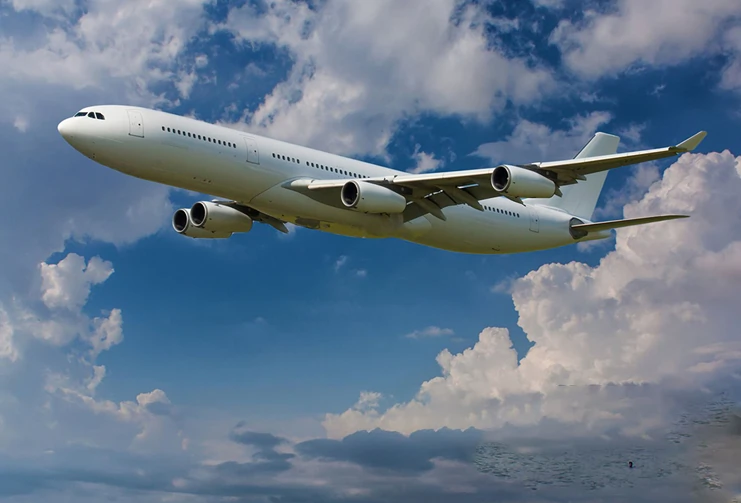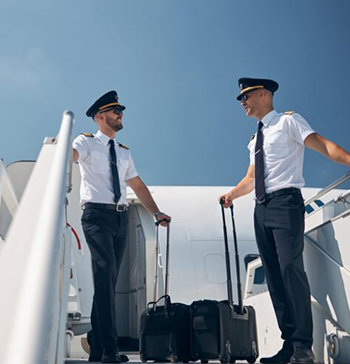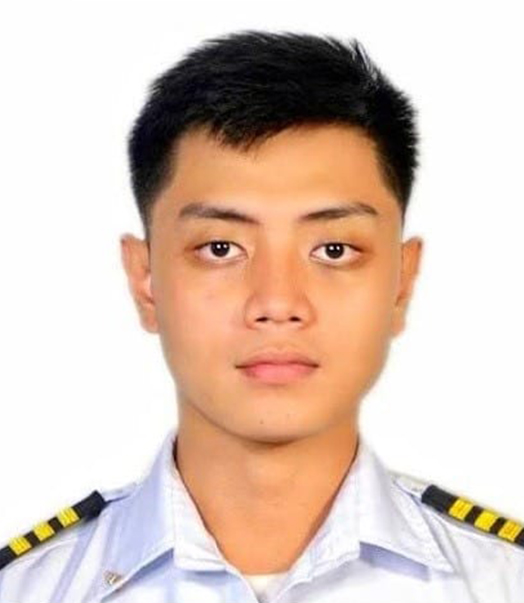
A Journey Beyond Borders: Why I Chose the Philippines for Pilot Training Instead of Russia By Iakov Kalinichenko
Introduction: A Dream Takes Flight
Growing up in Russia, aviation has always been a significant part of our national identity. From Yuri Gagarin, the first human in space, to modern advancements in aerospace technology, Russians are no strangers to the skies. My fascination with flight began at a young age. I would spend hours reading about aircraft, visiting aviation museums, and watching planes take off at the local airfield. As the son of an aeronautical engineer, the allure of piloting an aircraft seemed like a natural fit for me. Yet, when it came time to choose a place for my pilot training, I made a decision that surprised many of my friends and family: I chose to train in the Philippines.
This decision wasn’t made on a whim, nor was it an easy one. Russia, with its long-standing aviation history and world-class training programs, seemed like the logical option. However, after extensive research and personal reflection, I realised that the Philippines offered an exceptional training environment that aligned more closely with my goals and ambitions. Below I will share my journey, the factors that led me to choose the Philippines over Russia for pilot training, and how this decision shaped my future as a pilot.

The Global Aviation Landscape: Russia vs. the Philippines
To understand why I made the choice to train in the Philippines, it’s essential to first explore the aviation training landscape in both Russia and the Philippines.
Russia: A Legacy of Excellence
Russia has an undeniable legacy in aviation. The country is home to some of the world’s most advanced aircraft manufacturers, including Sukhoi, Tupolev, and Ilyushin, which have produced iconic planes like the Sukhoi Su-27 and the Tupolev Tu-154. Russian flight schools, such as the Moscow State Technical University of Civil Aviation and the Saint Petersburg State University of Civil Aviation, offer rigorous training programs that have produced some of the world’s finest pilots.
However, Russian pilot training is often shaped by the country’s vast airspace and military aviation tradition. The programs are intense and heavily focused on discipline and precision, characteristics I value deeply. Despite this, there were several aspects of Russian training programs that made me question whether they were the best fit for me. The regulatory environment, language barriers for international students, and the often bureaucratic nature of aviation authorities in Russia presented challenges that led me to consider alternative options.
Want to find out more about our pilot courses?
The Philippines: A Hidden Gem in Aviation Training
On the other hand, the Philippines is not as globally renowned for aviation as Russia, but it has quietly become one of the top destinations for aspiring pilots. The country’s aviation industry has grown rapidly over the past few decades, thanks to its strategic location, favourable weather conditions, and increasing demand for pilots in Asia and beyond.
The Philippines has earned a reputation for being a welcoming and efficient destination for international flight training. Its schools adhere to international aviation standards, offering programs accredited by the Civil Aviation Authority of the Philippines (CAAP) and recognized by global aviation authorities like the Federal Aviation Administration (FAA) and the International Civil Aviation Organization (ICAO). The country’s warm climate, affordable tuition fees, and access to a wide variety of aircraft make it a particularly attractive option for foreign students like myself.
Key Factors in My Decision
After weighing the pros and cons of each country, I identified several key factors that ultimately tipped the scales in favour of the Philippines.
Weather and Training Conditions
One of the biggest advantages of the Philippines is its tropical climate, which offers year-round flying conditions. This was a critical factor for me. In Russia, harsh winters and unpredictable weather can severely limit flying time, which can delay training and add unnecessary costs. By contrast, the Philippines enjoys consistent weather throughout the year, allowing students to complete their training in a shorter time frame. This was important to me because I wanted to accelerate my progress and enter the aviation industry as soon as possible.
Global Recognition and Standards
Despite its size, the Philippines adheres to the same international aviation standards as other major countries. The Civil Aviation Authority of the Philippines (CAAP) ensures that all flight schools follow strict guidelines in line with ICAO regulations. This global recognition was crucial for me, as I wanted to ensure that my licence would be accepted worldwide, particularly if I decided to work in Asia, Europe, or other regions after completing my training.
Additionally, many flight schools in the Philippines partner with international airlines and aviation companies, offering students opportunities to network and secure employment post-training. This global approach to aviation education appealed to me, especially as I was considering future employment opportunities outside of Russia.
Cost-Effectiveness
Cost is an important factor for any student, especially for pilot training, which can be prohibitively expensive. In Russia, while the quality of training is undeniably high, the cost can be overwhelming due to various fees, including tuition, aircraft rental, and licensing costs. In contrast, the Philippines offers a more affordable training experience without sacrificing quality. The lower cost of living, combined with competitive tuition fees, made the Philippines an attractive choice. I was able to save money while still receiving a world-class education.
Language and Communication
While I am proficient in Russian, I knew that learning to fly in English would give me a significant advantage in the global aviation market. English is the international language of aviation, and being able to communicate fluently in English is essential for pilots who wish to work internationally. In the Philippines, English is widely spoken, and all aviation training is conducted in English, which allowed me to practise and improve my language skills in a professional setting. This was a major benefit that I wouldn’t have received to the same extent in Russia.
Cultural Immersion and Personal Growth
Beyond the technical aspects of flight training, I was also drawn to the opportunity for cultural immersion and personal growth. The Philippines is known for its hospitality and friendly people. As an international student, I felt welcomed and supported throughout my training. This positive environment made the experience enjoyable and allowed me to focus on my studies without the stress of adjusting to a harsh or unfamiliar culture.
Living in the Philippines also gave me the chance to experience a different way of life, which broadened my horizons and taught me valuable life lessons. The country’s rich history, diverse culture, and beautiful landscapes provided a unique backdrop for my aviation journey. I made lifelong friends from all over the world and gained a deeper appreciation for the importance of global perspectives in aviation.
My Training Experience in the Philippines
Once I arrived in the Philippines, I enrolled at Orient Aviation Philippines, one of the country’s leading flight schools. The experience exceeded my expectations in every way. The instructors were highly experienced pilots with thousands of flight hours under their belts. They were not only knowledgeable but also approachable and eager to share their expertise with students.
The training program was well-structured, starting with ground school to ensure a strong theoretical foundation in aerodynamics, meteorology, navigation, and aircraft systems. After mastering the theoretical aspects, I moved on to flight training, where I had the opportunity to fly various types of aircraft, from single-engine trainers to more advanced models.
The school’s fleet was modern and well-maintained, which gave me confidence in the safety and reliability of the aircraft. The practical training included cross-country flights, night flying, and instrument flight rules (IFR) training, all of which prepared me for real-world scenarios. I appreciated the hands-on approach and the emphasis on safety and professionalism at every stage of the training.
One of the highlights of my training was the opportunity to fly over the stunning landscapes of the Philippines. From the picturesque islands and beaches to the bustling cities and lush mountains, every flight offered breathtaking views. These experiences not only enhanced my flying skills but also deepened my connection to the country.
Challenges and Overcoming Them
While my experience in the Philippines was overwhelmingly positive, it wasn’t without its challenges. The most significant hurdle was adapting to the tropical climate, which is very different from the colder weather I was used to in Russia. The heat and humidity took some getting used to, especially during long training sessions. However, I quickly adjusted and learned how to stay cool and hydrated during flights.
Another challenge was being far from home. While I was excited about studying abroad, there were moments when I missed my family and friends in Russia. Fortunately, the welcoming atmosphere of the Philippines and the support of my fellow students helped me overcome any feelings of homesickness. I also stayed in regular contact with my loved ones through video calls, which made the distance more manageable.
Career Prospects After Training
One of the main reasons I chose the Philippines for my pilot training was the excellent career prospects it offered. Asia, in particular, is experiencing a massive surge in demand for pilots due to the rapid expansion of airlines and the growing number of passengers in the region. Many airlines are actively recruiting pilots trained in the Philippines, as they recognize the high quality of education and training provided by the country’s flight schools.
After completing my training, I had several job offers from regional airlines in Southeast Asia and beyond. The flexibility of the Philippine training program, which adheres to international standards, meant that I could pursue opportunities not only in Asia but also in Europe, the Middle East, and even back in Russia.
Conclusion: A Journey of Transformation
Choosing to pursue my pilot training in the Philippines instead of Russia was one of the most important decisions of my life. It allowed me to fulfil my dream of becoming a pilot while also providing me with invaluable experiences that shaped me both professionally and personally. The high-quality training, combined with the welcoming environment, affordable costs, and global recognition, made the Philippines the ideal destination for my aviation journey.
As I look back on my time in the Philippines, I am grateful for the lessons I learned, the friendships I made, and the opportunities that opened up for me. I am now a confident and skilled pilot, ready to take on the challenges of the global aviation industry. My journey in the Philippines was more than just about learning to fly—it was about embracing a new culture, expanding my horizons, and achieving my dreams.
To anyone considering a career in aviation, I wholeheartedly recommend the Philippines as a top destination for pilot training. It’s a place where dreams take flight, and where aspiring pilots like myself can soar to new heights.
Free Career Guide

Want to find out more about our pilot courses?
Download our free eBook to learn all about pilot training in the Philippines, including the qualifications needed, the training process, available courses, and career opportunities. Find out how you can take the first step toward a rewarding career in aviation.
Download Pilot Course Information Guide
Our Pilot Training Courses
Take flight with our comprehensive Pilot Training Courses, designed to elevate your aviation career







